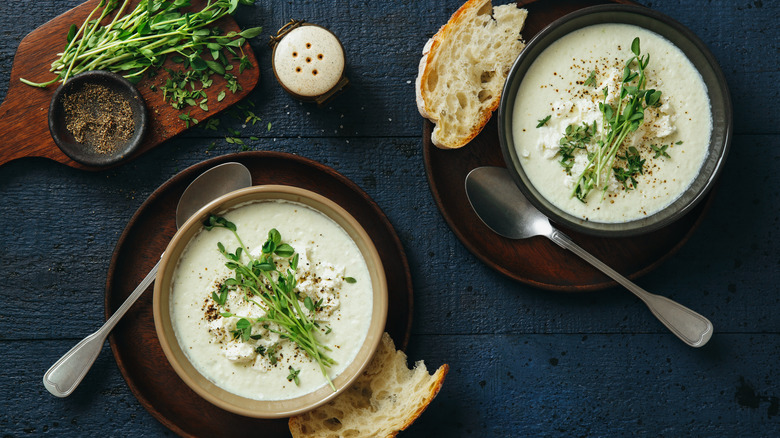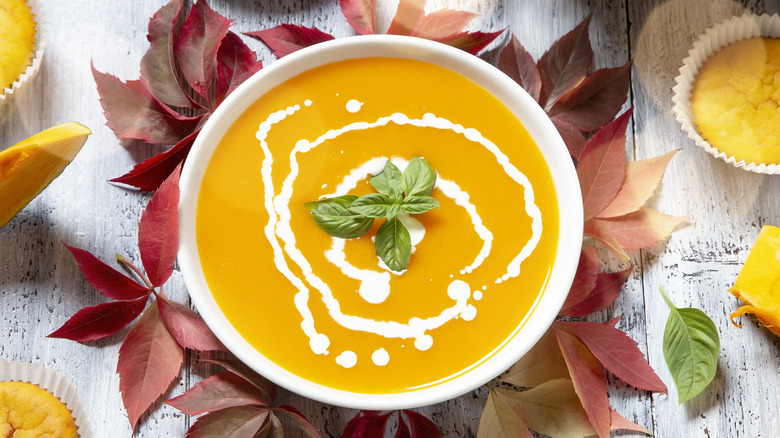The One Type Of Soup You Shouldn't Freeze
There are many different types of foods that can take up residence in the freezer and enjoy long shelf lives for a satisfying sit-down meal months later. Soups are one of the best examples of pre-made dishes that can be stored away and retain much of their original flavor and texture, post-thaw.
But not all soups are alike, obviously, and for this reason, some fare better than others in the coldest corners of the refrigerator. Because of their versatility, soups have a range of bases and ingredients that will determine whether freezing is the best option.
Dairy-based soups made with cream or milk, such as vineyard New England clam chowder, are crowd pleasers — but they are not well suited for freezing. The good news is there are a few hacks that can be used for bisques, chowders, and other creamy concoctions, so they hold up their texture after being thawed. There also are a number of other soup varieties that are perfectly suited for the freezer.
What happens to frozen dairy-based soup
The reason soups made with cream and milk do not do well in the freezer boils down to simple science. Bisques, chowders, and other creamy soups tend to take on a grainy texture upon thawing because the base separates from the rest of the ingredients. The end result is a less-than-satisfying mix that more often than not will be so unappetizing that it's hard to choke down. While, yes, it's perfectly safe to freeze milk, the protein content will thaw before the water content, which gives it a grainy, curdled texture. Safe to eat, but definitely less than delicious.
This phenomenon holds true for soups made with dairy substitutes as well, unfortunately. Soups made with coconut milk, for example, still have that creamy texture that results in less-than-ideal freezing.
Despite this reality, cream-based soups still can be considered for the freezer — at least portions of the ingredient list can. To plan ahead and make the most of veggies and other foods that go into creamy soups, prepare and freeze those ingredients — but add the creamy base later. For optimal planning, write the specific measurements on the bag, so you can easily add the cream or milk after thawing.
Choose brothy, vegetable-heavy soups instead
While bisques, chowders, and their creamy compatriots are not ideal for the freezer, there is a whole litany of other soups that are perfectly suited for freezing today and thawing tomorrow for a quick, satisfying meal, as needed. Because of their consistency, broth-based soups tend to freeze especially well, locking in the original flavor and texture.
Garden minestrone is a great example of a soup that can be prepared in advance and stored away for a frozen slumber for months on end. The hallmarks of this type of soup –- including pasta, carrots, and zucchini -– all do well in frozen conditions. You just may want to freeze the pasta separately — or add it in later once the soup has thawed.
Lentil-based soups also do great upon thawing from the freezer. An Italian sausage white bean soup, for instance, is an example of a hearty, flavorful mix with potatoes, zucchini, and the signature meat and lentils. It will retain all of its time-honored qualities after reheating from the freezer. This Tuscan white bean soup is another great example, for similar reasons.



